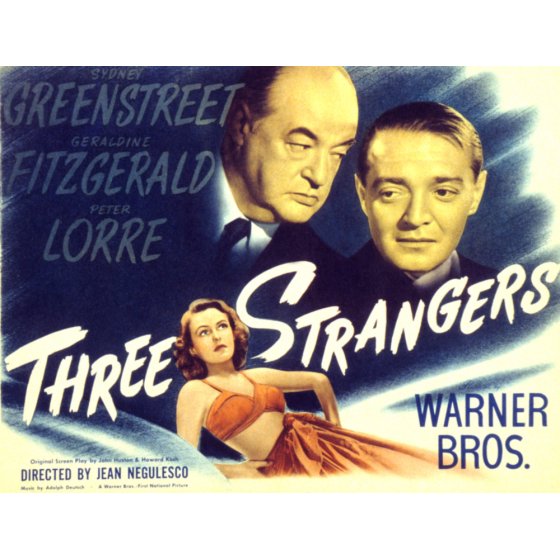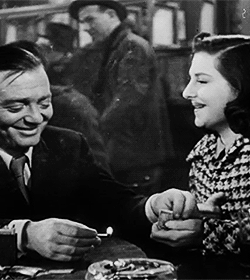
Synopsis: A death-row inmate is being taken to the electric chair. He is so terrified of his fate that he must be dragged down the corridor by the guards. He finds that he can’t help but scream at the top of his lungs.
After the execution, pathologist Dr. William Chapin is doing an autopsy on the body, as required by law. He is interrupted by Ollie Higgins, a quiet man who was the executed man’s brother-in-law. Dr. Chapin tells him that the autopsy reveals fractures up and down the man’s spinal column — something that could not be caused by death from electricity.
Chapin says he’s seen many such fractures in the spines of executed criminals, and he has a theory as to what has caused it. He believes that extreme fear causes tension within the spinal column — so much that it eventually begins to crack. Ollie suggests this might be the same thing that causes one’s spine to tingle when afraid. Amused, Chapin agrees, and dubs the mysterious force “the Tingler”.
Ollie asks Chapin for a lift home, and Chapin agrees. It turns out that Ollie and his wife Martha own and operate a silent-movie revival theater, and live in an apartment above it. Martha is both deaf and mute, and she and Ollie communicate via sign language.
Staying for a cup of coffee, Chapin breaks a saucer and cuts his hand. When Martha sees the blood, she becomes terribly frightened and faints dead away. Ollie notes that Martha always reacts this way at the sight of blood.
Returning home, Chapin finds that his wife Isabel is not at home. This doesn’t surprise him, as Isabel doesn’t bother to hide the fact that she’s cheating on him with a number of different men. Isabel’s sister is home, though, waiting for her date, Chapin’s own lab assistant Dave.

When Dave shows up, Chapin tells him about Martha, and wonders if the unseen force – the Tingler — might have a greater effect on her because being mute, she cannot release the tension of fear by screaming.
Chapin stays up until 1 am, when Isabel finally returns home. She brazenly lingers on the sidewalk kissing another man, and laughs at Chapin when he confronts her about it. She stops laughing when Chapin produces a pistol and fires at her. She falls to the floor and Chapin carries her to his lab.
He takes a series of X-rays of Isabel’s back. In a few moments she awakens, and Chapin tells her that the bullet he fired was a blank cartridge, and that she had merely fainted. Enraged, Isabel leaves. But the next day, Chapin shows Dave the X-rays. In her moment of terror, Isabel had been subject to an unbearable amount of fear, and the series of X-rays show a slug-like creature growing along the length of his spine — the Tingler, they realize, is a living creature that feeds of human terror.
Chapin is desperate to study the creature further, but he and Dave realize they can’t experiment on each other, as it’s almost impossible for someone to frighten themselves so much that the Tingler will reveal itself. So what lengths will Chapin go to in order to frighten someone else?

Comments: William Castle was a famous cinematic shlockmeister whose fabled gimmicks to boost ticket sales are now better known than the films they were designed for. There’s a delightful ring of ballyhoo even in the names of the various gimmicks: “Emergo”, in which a plastic skeleton suspended by a wire glided over the audience’s heads, was featured for The House on Haunted Hill; a “Ghost Viewer”, which could either hide or reveal the onscreen phantoms, was given to patrons of 13 Ghosts; the final reel of Mr. Sardonicus (1961) was interrupted and a “Punishment Poll” taken in the audience to decide the fate of the movie’s villain (an obvious cheat, as Castle had only shot one ending anyway). Even his tamer gimmicks were memorable: in Homicidal (1961) the movie was stopped in the last reel for a “fright break” so that the more chicken-hearted audience members could leave the theater before the movie’s horrifying conclusion. In Macabre (1958) Castle helpfully assured members of the audience that they were all insured against the possibility of death by fright. And he wasn’t above such publicity-seeking stunts as parking ambulances outside the theaters (just in case they were needed to transport dangerously frightened patrons to the nearest hospital) and hiring shills in the auditorium to faint at the most “terrifying” moments.
But Castle’s most famous gimmick, “Percepto”, was created for tonight’s movie The Tingler. Often misremembered as a low-voltage electric shock wired into the theater seats (a myth reinforced by Joe Dante’s affectionate homage Matinee and the 1991 slasher film Popcorn), Percepto in fact rattled audience members by violently shaking the bottom of the chairs. In the initial run of The Tingler Castle used surplus vibrating de-icing motors from military aircraft. In revivals today exhibitors often use alternate methods of buzzing the butts of patrons; most commonly computer fans that are deliberately set off-balance so that they will buzz violently at the crucial moment. Because setting up such seats is quite labor-intensive, only a handful of seats are usually rigged in this way. But it doesn’t matter; audiences loved it in 1959, and they still love it in revival showings today.

Even without the gimmick, the movie is great fun, and Vincent Price is at his best as the mordantly charming Dr. Warren Chapin. Price has the dubious distinction of being the first person to portray having an acid trip on screen (Dr. Chapin acquires a dose of LSD — which was highly experimental in those days — in order to give himself a bout of terror and thus grow the parasitic “tingler” in his own spine).
The movie is agreeably preposterous in the way all of Castle’s films were. Aside from Price’s over-the-top acid trip (“The walls are closing in on me!” Chapin shouts, “The walls!”), we’re also treated to Chapin wrestling with a rubber “Tingler” that looks like a giant centipede, Isabel successfully slipping Chapin a micky by exploiting his fear of being slipped a micky, and poor Martha opening her medicine cabinet to find a “Death Certificate” pinned up there with her name on it (under “Cause of Death” the certificate says “FRIGHT”).
Aside from Price himself, the cast isn’t particularly distinguished. Patricia Cutts stands out as the sinister Isabel, and Philip Coolidge plays Ollie as a man who appears — but might not be — completely harmless. Judith Evelyn, second-billed here, probably had the most distinguished film pedigree and is quite expressive as the deaf-mute Martha, but it’s not a particularly well-written role, and the “sign language” she uses with Ollie appears to have been improvised on the spot.
This is probably Castle’s best film: quite silly and lurid, but it’s lively, and no other filmmaker could have made it.

Crystal reveals the reason for bringing the two men to her apartment. Crystal has in her possession a statue of Kwan Yin, the Chinese goddess of good fortune. According to legend, Crystal says, if three strangers make a wish over the statue at midnight of the Chinese new year, the wish will be granted. If there is one wish they can agree on, they can all share in the good fortune provided by Kwan Yin.
Johnny has an Irish sweepstakes ticket, and he suggests they all wish for it to be a winner, then sign an agreement to divide any winnings from the ticket.
The others quickly agree to this, and a contract of sorts is hastily written up. The clock strikes midnight as the strangers concentrate on their wish, and it seems for a moment that the statue is smiling at them; but soon the moment is gone and the three go their separate ways.
We then follow the strangers in turn and discover that each one has arrived at a moment of crisis in their lives. Crystal’s estranged husband David (Alan Napier) has fallen in love with a Canadian woman and wants a divorce, but Crystal refuses to grant one; she hatches a scheme to send the other woman back to Canada and bring David back to her. Arbutny has made a series of disastrous investments with money entrusted to him by the widowed Lady Beladon (Rosalind Ivan). Facing professional ruin when the secret gets out, he has recklessly decided to propose marriage to her in order to conceal his financial mismanagement. Meanwhile, Johnny’s low-life underworld associates have gotten him convicted of a crime he didn’t commit. His only hope for redemption lies with his girlfriend, the devoted Janet (Marjorie Riordon).
When Johnny is unexpectedly exonerated, he discovers that the Irish sweepstakes ticket has won. But unbeknownst to him, Arbutny and Shackleford have each decided, for their own reasons, that Johnny need never know about the money….






I get nary a tingle from THE TINGLER, but THREE STRANGERS sounds like a winner. Peter Lorre and Sydney Greenstreet made only one more film together, Don Siegel’s THE VERDICT.
LikeLike